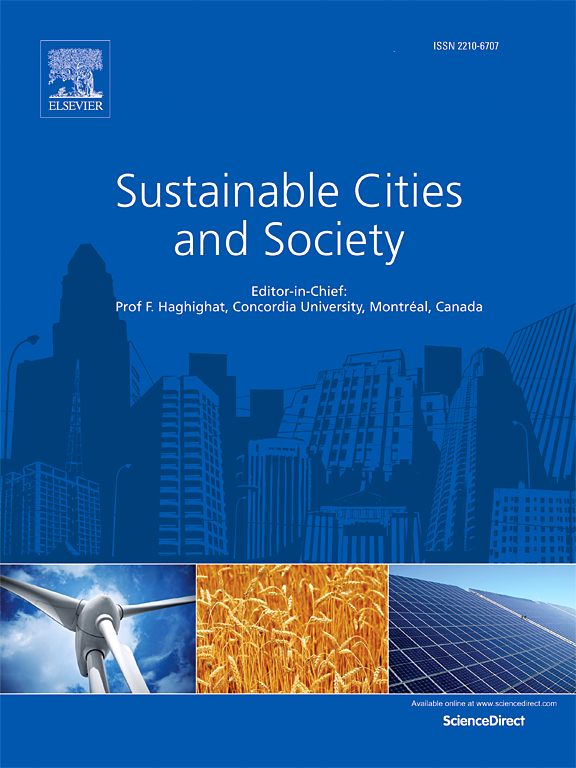Association between air temperature exposure and childhood rhinitis risk, and the mediating role of ambient O3: A multi-city study of 40,103 Chinese preschool children
IF 10.5
1区 工程技术
Q1 CONSTRUCTION & BUILDING TECHNOLOGY
引用次数: 0
Abstract
Higher air temperature and increased ambient ozone (O3) concentration have been associated with childhood rhinitis risk. However, the potential mediating role of elevated O3 in the increased childhood rhinitis risk due to higher air temperature exposure has not been examined. This large-scale cross-sectional study included 40,103 preschool children from 7 Chinese capital cities. Information on ever-rhinitis, current-rhinitis, and doctor-diagnosed allergic rhinitis (AR) was collected using a standardized questionnaire. Average air temperature (TEMavg) and O3 concentration in the whole year, warm season, and cold season were estimated at 1 km spatial resolution. The findings revealed that exposure to higher air temperature (annual TEMavg, warm season TEMavg, and cold season TEMavg) and ambient O3 (annual O3, and warm season O3) were associated with an elevated risk of ever-rhinitis, current-rhinitis, and doctor-diagnosed AR. Moreover, elevated O3 concentration played important mediation effects on the relationships between higher air temperature and childhood rhinitis risk, with the mediated proportions ranging from 19.92% to 35.14% for the whole year, 18.62% to 32.82% for the warm season, and 3.85% to 13.32% for the cold season. Our study highlighted that controlling O3 pollution may be an effective approach to mitigate the increasing childhood rhinitis risk due to global warming.
求助全文
约1分钟内获得全文
求助全文
来源期刊

Sustainable Cities and Society
Social Sciences-Geography, Planning and Development
CiteScore
22.00
自引率
13.70%
发文量
810
审稿时长
27 days
期刊介绍:
Sustainable Cities and Society (SCS) is an international journal that focuses on fundamental and applied research to promote environmentally sustainable and socially resilient cities. The journal welcomes cross-cutting, multi-disciplinary research in various areas, including:
1. Smart cities and resilient environments;
2. Alternative/clean energy sources, energy distribution, distributed energy generation, and energy demand reduction/management;
3. Monitoring and improving air quality in built environment and cities (e.g., healthy built environment and air quality management);
4. Energy efficient, low/zero carbon, and green buildings/communities;
5. Climate change mitigation and adaptation in urban environments;
6. Green infrastructure and BMPs;
7. Environmental Footprint accounting and management;
8. Urban agriculture and forestry;
9. ICT, smart grid and intelligent infrastructure;
10. Urban design/planning, regulations, legislation, certification, economics, and policy;
11. Social aspects, impacts and resiliency of cities;
12. Behavior monitoring, analysis and change within urban communities;
13. Health monitoring and improvement;
14. Nexus issues related to sustainable cities and societies;
15. Smart city governance;
16. Decision Support Systems for trade-off and uncertainty analysis for improved management of cities and society;
17. Big data, machine learning, and artificial intelligence applications and case studies;
18. Critical infrastructure protection, including security, privacy, forensics, and reliability issues of cyber-physical systems.
19. Water footprint reduction and urban water distribution, harvesting, treatment, reuse and management;
20. Waste reduction and recycling;
21. Wastewater collection, treatment and recycling;
22. Smart, clean and healthy transportation systems and infrastructure;
 求助内容:
求助内容: 应助结果提醒方式:
应助结果提醒方式:


